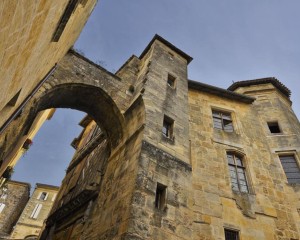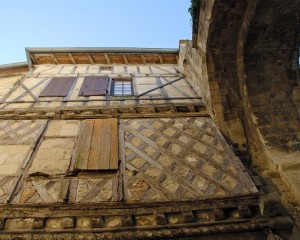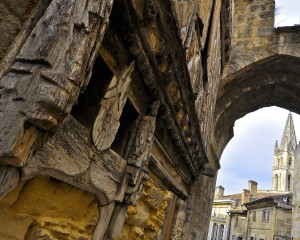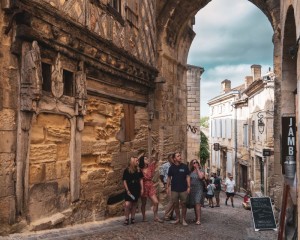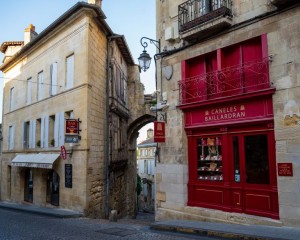This pretty building is the only timber-framed house in the village and has a facade dating from the very beginning of the 16th century, with foundations dating from much earlier than this period.
There are mullioned windows on the building facing it, and on its south façade (below), the presence of a turret and a small double window. All this shows the architectural evolution of this residential complex up to the 16th century.
It can be argued that this house represented an urban ensemble with the "Maison de la Commanderie" on the other side of Rue Guadet. The house still has a remarkable polygonal tower containing a beautiful spiral staircase from the 16th century. It is probably between this tower and the Commanderie that the junction building was located. Did a first enclosure inside the city exist before the one we know today? Many questions remain unanswered...
The hilly geography of the territory on which the medieval town was founded defined the social separation of the population between "upper and lower town" or more clearly "religious part at the top and secular part at the bottom", depending on the period. The name "Cadène" perhaps comes from the Gascon word "catena" meaning "chain", and could refer to the presence of a chain that materially separated the city into two parts. Today, there is no visible trace of separation on the building, except for this arch overlooking the street, which would delimit a supposed doorway. From a historical point of view, the name "Cadène" would most probably come from one of the owners of this house in the 13th century: Guillaume Renaud de la Cadène.
Sculptures decorating the lower wooden parts of the house also leave room for several interpretations: characters, animals, plants, fruits... Bunches of grapes for some, ears of corn for others... a composition of Renaissance and Italian influences and probably a reference to the importation of products from the New World, freshly discovered at the time of the latest artistic developments in this house!
The rich heritage of Saint-Emilion is easily told during the visit "Saint-Emilion, UNESCO City Tour".

Grand Saint-Emilionnais Tourist Office
Le Doyenné - Place des Créneaux
33330 SAINT-EMILION

